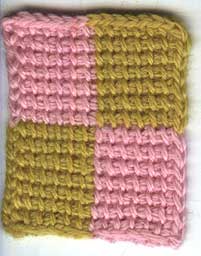
The sample above shows tunisian afghan stitch worked in the intarsia method.
The instructions below show the intarsia method used with afghan stitch but you shouldn’t have any problems applying it to others. All you have to do is twist the yarns whenever you change colours.
First of all, choose a chart for your crochet. I have used a simple 7 stitch by 7 row rectangle for my sample. You can use any knitting chart for Tunisian intarsia crochet as the proportions are about the same as knit stitches, but you will have to turn the chart on it’s side because tunisian crochet stitches are taller than they are wide, and knitting
stitches are wider than they are tall.
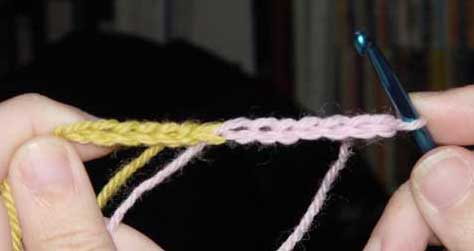
Start by making your chain in the same colours as the first row of your chart. (Don’t forget to count the slip knot as your first stitch). Don’t work any turning chains.
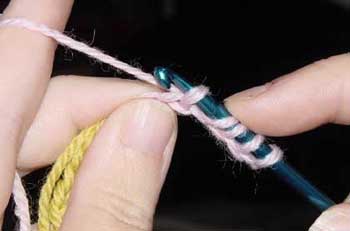
1st row:
A: Work the foundation row as follows, following the first row of your chart: Insert your hook into the top thread of the second chain from the hook. Draw a loop through and leave it on the hook. Repeat in every chain until you need to change colours. Always read your chart from right to left.
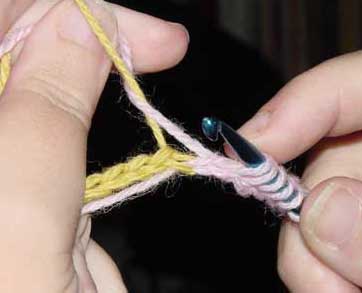
B: To change colours, bring the new colour under the one you’ve finished with and continue making your stitches. Do this whenever you need to change colours. (The next stitch in the sample was yellow).
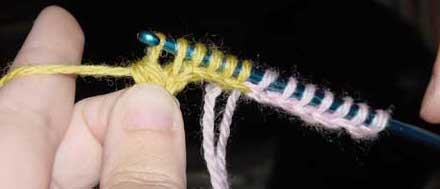
2nd row:
Complete all the stitches in the same colour as the previous row. Each row of your chart equals two rows of crochet. IE: One row to create the loops and one row to work them off. This is why you read every row of your chart from right to left.
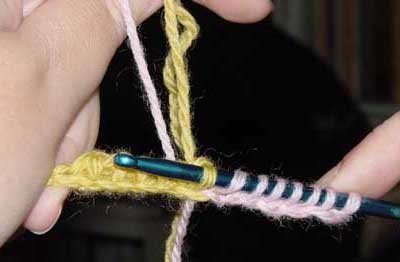
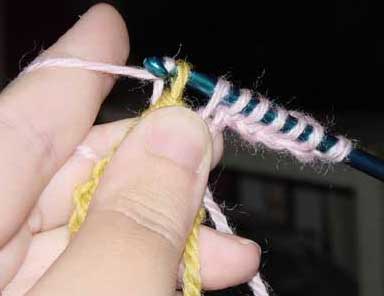
A: To complete the stitches wind your yarn around the hook and draw it through two loops, repeat until you only have one loop of your current colour left on your hook. (above left)
B: Twist your yarns by picking up your new colour from underneath the one you just finished with and complete the stitch. Finish the row, changing colours in this way whenever necessary.
Always reading your chart from right to left, repeat these two rows to form the afghan stitch, picking up the next row of loops in the vertical thread of the stitches formed by the previous two rows, and remembering to always pick up your new colour from underneath the old colour. When you’ve completed your crochet piece, finish off with a row of slip stitches in the same colours as your last row.
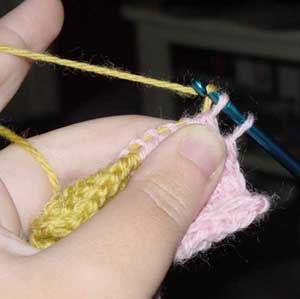
If the first stitch of any row in your chart is different to the last stitch of the previous row, start your new colour when drawing through the last two loops on the previous row. This way your first loop will be the correct colour to begin the next row.
You can also use this method to work fairisle patterns by stranding the yarn across the back of your work.
Instructions and images are copyright © Sarah Bradberry April 25th 2002, all rights reserved.
